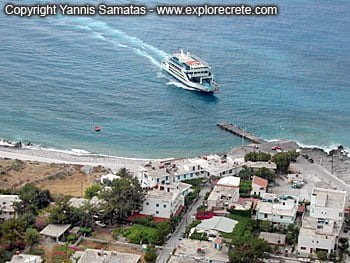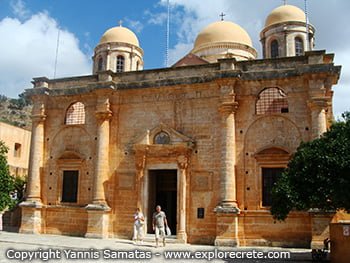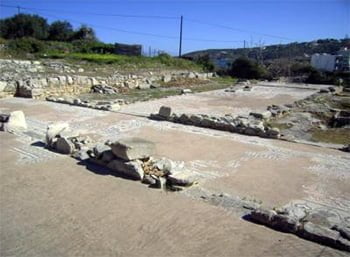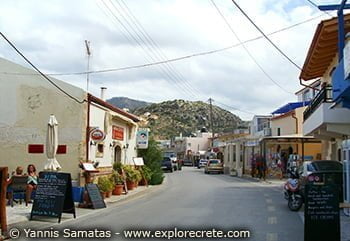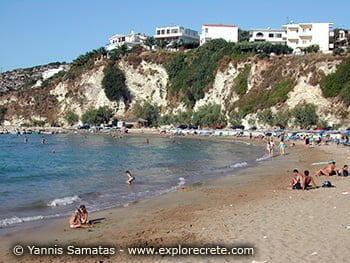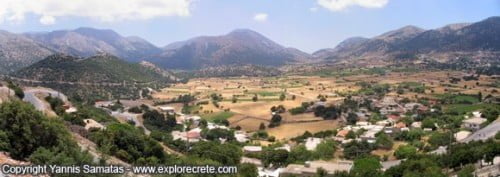Agia Sofia Cave in Topolia in Western Crete
The Cave of Agia Sofia
When driving in western Crete’s Kisamos County, on the road heading to Elafonissi (Deer Island) just after the village Topolia, you will go through a small tunnel. Exactly at the tunnel’s exit, high up on your right, you will see the opening of a cave and an unusual metallic star reflecting the sun’s rays. This is the entrance to an interesting cave named Agia Sofia.
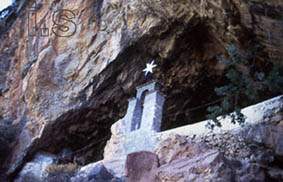

From the street level, you have to climb quite a few steps, then continue walking through a small path. As you get closer to the cave, you realize the opening is quite big, and little by little the roof of a quaint church begins to appear on the left. The church is situated inside the cave itself, which is why they both bear the same name.
Inside the Cave
Upon entering the cave of Agia Sofia, you suddenly realize that it is quite large (almost the size of a cathedral). According to official findings, the cave of Agia Sofia is at an elevation of 285 meters and includes a cupola 20 meters high and 70 meters in diameter with variform stalactites (deposits which hang down from the ceiling of the cave) and stalagmites (deposits that project upward from the ground of the cave). Many ancient objects were discovered at this location, including shells from the Neolithic period.
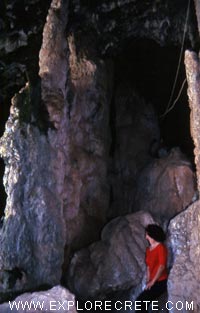
After taking a few hesitant steps until the eyes adjust to the dim light, continue towards the little church, which is in the front on the left side of the cave, and forms one of the church’s walls. The church is small and quite ordinary, without any architectural or hagiographical features. What makes it unique is the sense of space once you are inside.
Returning to the outside cave again, with eyes that are now hopefully accustomed to the darkness of the area, we begin our exploration.
The size of the stalagmites is truly incredible, some of them measuring a staggering five to six metres. The stalactites are about the same size. But they’re still a long way from joining in the middle, and are still about four to five metres apart – which gives you an idea of the size of this cave (think of a five-storey building and you’ll get the idea).
In several locations of the cave, wild fig trees have grown and there are many pigeons throughout the area. Walking deeper into the cavern the humidity becomes very pronounced – the ground soaked with water, but not particularly slippery.
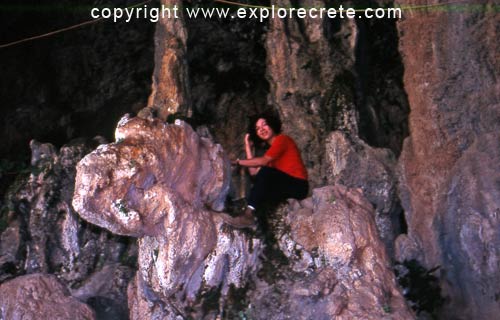
In several spots alga has completely covered the rocks, providing them with a dark green velvet-like coating. The stalagmites offer a never-ending variety of shapes, ranging from extremely tall conical formations to very short forms that somewhat resemble to top of a bald head.
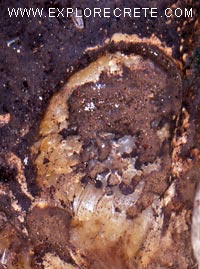
Particularly impressive is a combo rock and stalagmite formation which is a close replica of the mythical unicorn (PHOTO above). It is quite impossible to observe the stalactites in detail without a torchlight because of their forbidding height and the darkness inside the cave.
As you can imagine, the Cave of Agia Sofia is used for worshipping purposes and is connected with various legends. One of the most popular is the one regarding St. George (the dragon slayer). It is believed that the hoof of St. George’s horse left an imprint on one of the rocks inside the cave. Indeed, there does exist a large stone with an indentation in the shape of a horseshoe (PHOTO right).
It is said that the cave is still not entirely explored, and it is believed it still extends to other halls and small cavern-like apertures. The usual stories are heard about putting an animal through some narrow opening and having it reappear several kilometers away.
We spent quite a long time exploring this impressive cave and trying to satisfy our appetites of its magical splendor. We were never sated. It wasn’t just the awesome sizes of the many features that stole the show. Mainly, it was the spectrum of colours and all those odd and interesting stalactites and stalagmites that created pictures of another world, offering food to the imagination, and taking us on to encounters of the third kind. And, once again, we bow to the grandeur of nature.
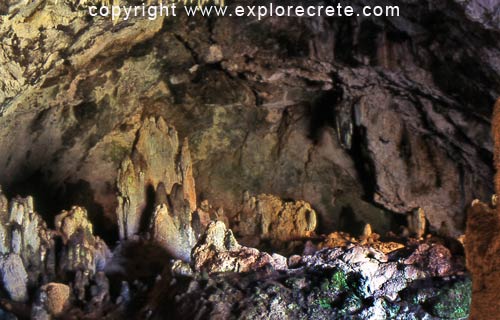
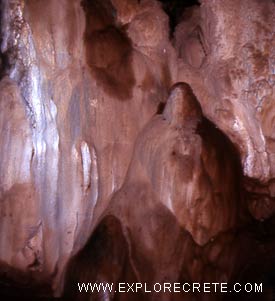
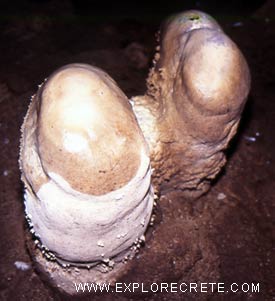
© explorecrete.com All Rights Reserved. Reproduction or copying without permission is prohibited.

